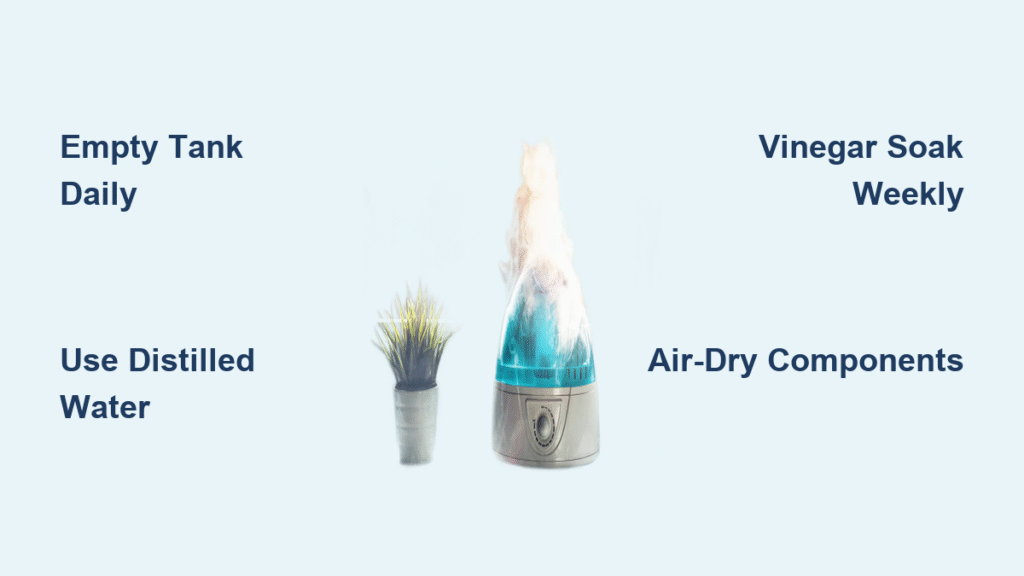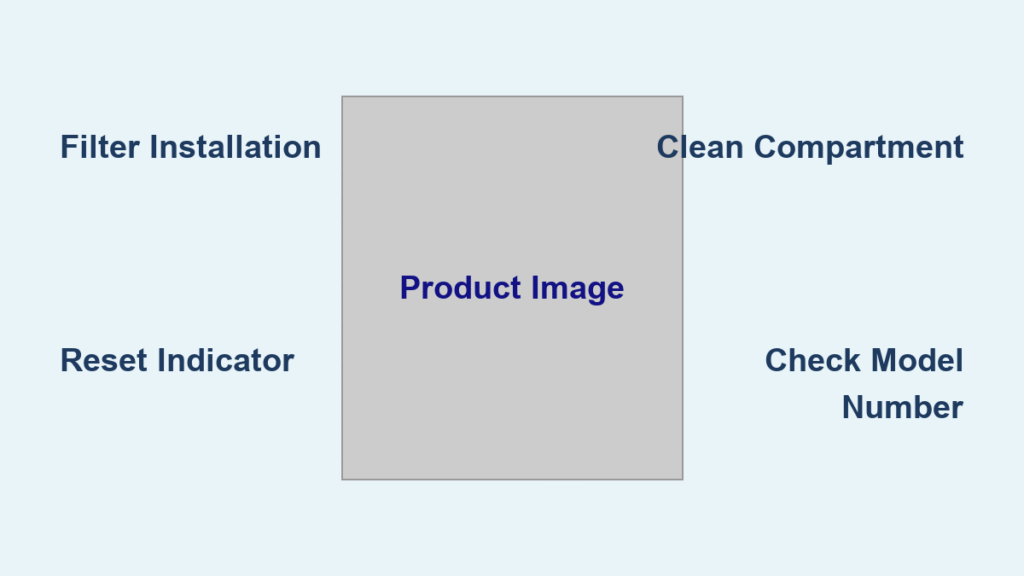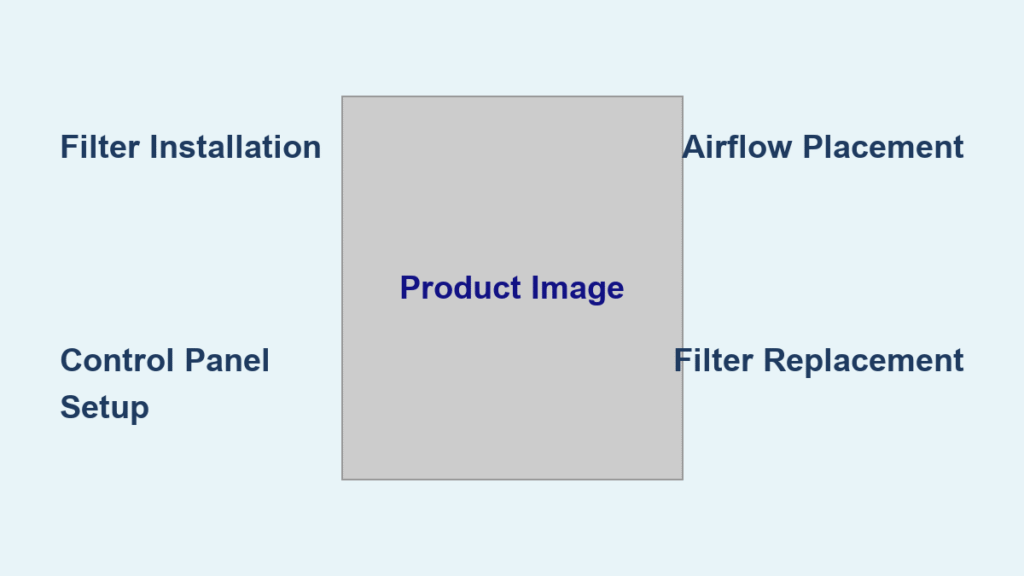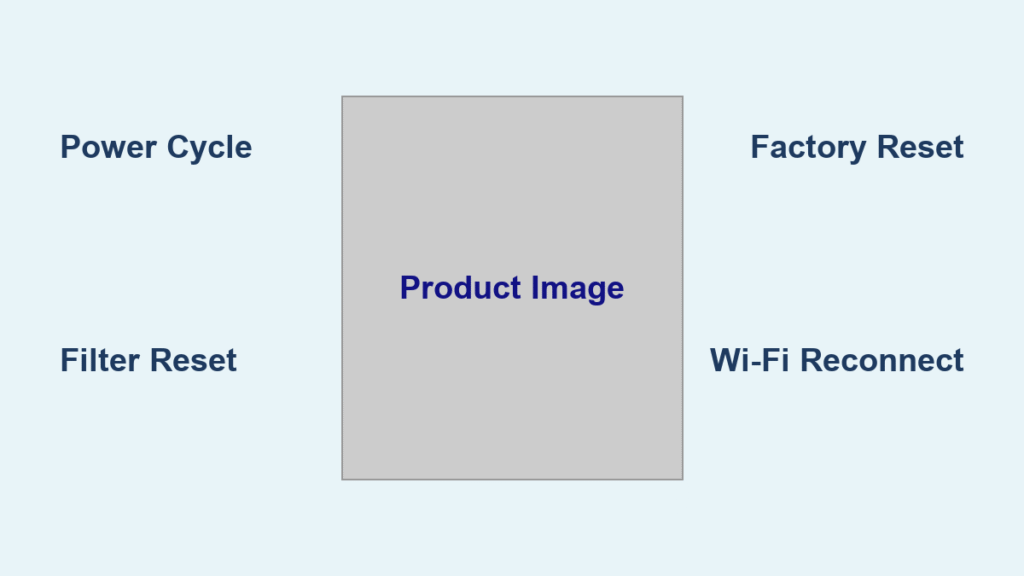That musty smell when you turn on your humidifier? It’s not just unpleasant—it’s a red flag. Your humidifier could be spraying mold spores, bacteria, and mineral dust directly into your breathing space every time it runs. The EPA warns that skipping regular sanitization turns this helpful device into a health hazard, especially for kids and allergy sufferers. But here’s the good news: with a simple 30-minute weekly routine, you’ll banish contaminants and keep your air clean. This guide reveals exactly how to sanitize humidifier components without damaging them, prevent dangerous mineral buildup, and avoid the top mistakes that make your unit work against your health.
Ignoring humidifier sanitation has real consequences. Biofilm—a slimy layer of bacteria—thrives in stagnant water tanks and pumps contaminated mist into your room within hours. Mineral deposits from tap water aren’t just unsightly; they fuel microbial growth and create “white dust” that settles on your furniture and lungs. You’ll learn why distilled water is non-negotiable, how to spot hidden mold in gaskets, and why mixing common cleaners could land you in the ER. Most importantly, you’ll get a step-by-step sanitizing system that works for every humidifier type, saving you from costly replacements.
Daily Steps to Prevent Humidifier Mold Growth
Stop letting your humidifier become a germ factory overnight. Stagnant water in the tank creates the perfect breeding ground for bacteria within 12 hours—meaning yesterday’s leftover water is already contaminated. The fix takes seconds but makes weekly sanitizing 80% easier.
Empty the tank completely after every single use. Don’t just unplug and walk away. Lift the tank and swirl it to drain hidden pockets of water in corners and spouts. That “almost empty” residue is where biofilm anchors itself. If you skip this, you’re guaranteeing a slime layer that requires harsher chemicals later.
Air-dry all components immediately. Separate the tank from the base and place both upside down on a clean towel. Warm, dark spaces like cabinets trap moisture—leaving parts stacked creates a mold incubator. For evaporative models, run the unit without water for 10 minutes after use to dry the wick. This daily habit is your first defense against musty smells.
Refill only with fresh distilled water. Tap water’s minerals feed bacteria and create limescale that clogs mist outlets. Distilled water eliminates white dust on furniture and reduces weekly cleaning time by half. If you must use tap water, add a demineralization cartridge—but never skip tank emptying.
Optional Daily Boost: Antimicrobial Cartridges
Insert an EPA-registered cartridge like Protec Tank Cleaner into the water reservoir. These slow bacterial growth between cleanings but do not replace weekly sanitizing. Evaporative model users should choose Essick Air’s bacteriostatic treatment instead.
Critical Safety Rules Before Sanitizing Your Humidifier
One wrong move during cleaning can destroy your humidifier or poison your household. These non-negotiable rules protect you from electrical hazards, toxic fumes, and device damage. Skip them, and you risk chlorine gas exposure or a fire hazard.
Unplug and wait 10 minutes before touching anything. Residual electricity in warm-mist units can cause shocks even when powered off. Never clean with wet hands—water conducts current straight to your heart.
Keep electronics bone-dry. Motors, control panels, and power cords must never get submerged. Only plastic tanks, bases, and removable nozzles get sanitized. If water splashes electronics, wipe immediately with a microfiber cloth and let sit unplugged for 24 hours.
Never mix bleach and vinegar. This creates chlorine gas that burns lungs and requires emergency care. Choose one disinfectant per session—never alternate mid-cleaning.
Run disinfection cycles outdoors. Place the unit on your porch while solutions circulate. Indoor fumes concentrate in enclosed spaces, irritating eyes and airways. Always wear gloves to protect skin from chemicals.
Step-by-Step Weekly Humidifier Sanitization Routine

This 25-minute process kills 99.9% of bacteria and dissolves mineral crust. Do it weekly (or every 3 days with heavy use) before slime becomes visible. You’ll need white vinegar, a soft toothbrush, and cotton swabs.
Disassemble Every Component in 4 Steps
- Move the unplugged unit to a sink area.
- Drain all water—shake the tank to clear hidden reservoirs.
- Remove filters, wicks, and demineralization cartridges.
- Separate plastic parts: tank, base tray, mist nozzle, and caps.
Remove Mineral Crust Without Scratching
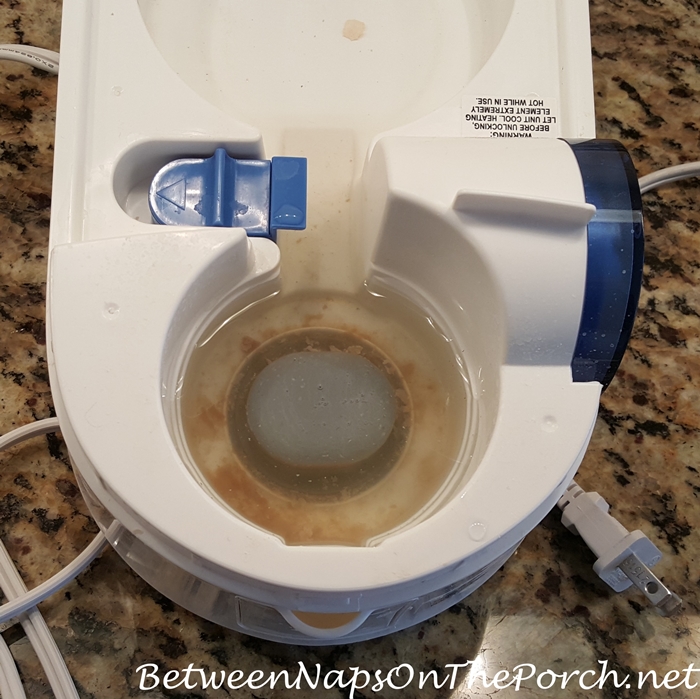
For tanks and bases: Mix 2 tablespoons white vinegar per ½ gallon water. Fill the tank halfway, cap it, and shake to coat all surfaces. Place it on the base so solution drains into the reservoir. Let sit 20 minutes—no longer, or vinegar damages seals. For stubborn limescale, pour undiluted vinegar directly onto crusty spots.
For ultrasonic units: Cover the nebulizer disc (small metal plate in the base) with ½ inch vinegar. Soak 20 minutes, then gently wipe with a cotton swab. Never scrub—this delicate part cracks easily.
For warm-mist units: Submerge only the heating element plate in undiluted vinegar overnight. The next day, use a soft toothbrush to loosen chalky residue.
Rinse and Dry to Prevent Recontamination
Rinse every part under running water until vinegar odor vanishes—this takes 3 full minutes. Shake vigorously to remove hidden water in nooks. Place components upside down on a towel in direct sunlight if possible; UV light kills residual microbes. Critical: Wait 2+ hours before reassembling. Reassembling damp parts reignites bacterial growth instantly.
Monthly Deep Disinfection: When and How for Your Humidifier

Weekly cleaning removes minerals but not deep-seated bacteria. Monthly disinfection is essential if you spot slimy residue, smell mustiness, or run the unit 8+ hours daily. This 20-minute process uses one of three safe solutions.
Choose Your Disinfectant Wisely
- Bleach solution: 1 teaspoon chlorine bleach per gallon of water (for plastic parts only).
- Hydrogen peroxide: 3% solution, undiluted (safer for rubber gaskets).
- Commercial tablets: Like Hoover Humidifier Cleaner (follow package ratios).
Disinfect Without Damaging Components
- After weekly descaling, prepare fresh disinfectant solution.
- Fill the tank halfway and place it on the base so liquid enters the reservoir.
- Let sit 15 minutes—longer weakens plastic integrity.
- Scrub interior crevices with a soft brush.
- For evaporative models: Never soak wicks in bleach/peroxide. Rinse mineral-clogged wicks in cold water, then air-dry. Discard moldy wicks immediately.
Model-Specific Sanitizing Tips for Ultrasonic, Warm-Mist & Evaporative Units
Generic guides ruin humidifiers. Your model dictates which parts get soaked, which need gentle care, and what cleaners to avoid.
Ultrasonic Cool-Mist Units
Mineral deposits on the nebulizer disc slash mist output by 70%. After descaling, inspect this disc with a flashlight—white crust means poor performance. Many tanks are top-rack dishwasher-safe, but never put the base in the dishwasher. Check your manual—most brands void warranties for improper cleaning.
Warm-Mist Steam Vaporizers
The heating element is your priority. Submerge only the metal plate—never the entire base. After vinegar soaks, check the medicine cup (if your model has one) for mineral buildup. Never run disinfectant through the steam path; it corrodes internal tubing.
Evaporative Wick-Style Units
Wick care makes or breaks these units:
– Remove wicks after each use and dry completely (run unit without water for 30 minutes).
– Weekly, swish wicks in cold water to release brown mineral sludge.
– Never use bleach—it destroys antimicrobial coatings.
– Replace wicks every 4 months even if they look clean; clogged fibers harbor hidden mold.
Humidifier Cleaning Schedule: Your Time-Saving Cheat Sheet
Follow this exact timeline to spend less time cleaning and more time breathing easy. Set phone reminders to avoid missed sessions.
| Task | Frequency | Time Required | Critical Notes |
|---|---|---|---|
| Empty tank & air-dry | After every use | 2 minutes | Prevents 90% of biofilm growth |
| Quick rinse & wipe | Every 2–3 days | 5 minutes | Focus on tank spout and base |
| Full descale + disinfect | Weekly | 25 minutes | Non-negotiable for health |
| Replace wick/filter | 4 months | 5 minutes | Replace sooner if discolored |
Fix Persistent Humidifier Odors and White Dust Fast
When standard cleaning fails, these targeted fixes solve the most common headaches in under 15 minutes.
Musty smell after cleaning? You missed hidden mold in gaskets. Remove all rubber seals, soak in hydrogen peroxide for 10 minutes, then scrub with an old toothbrush. Reassemble only when bone-dry.
White dust coating furniture? Your water source is the culprit. Switch to distilled water immediately or install a Protec demineralization cartridge. Never use tap water in ultrasonic units—it vaporizes minerals directly into your air.
Slimy film in the tank? Your unit is overdue for disinfection. Extend vinegar soak time to 45 minutes and use a bottle brush on the tank base. For thick biofilm, repeat the disinfection cycle the next day.
Persistent vinegar odor? Run the unit outdoors with fresh distilled water for 15 minutes. Discard the water—never let it mist into your room.
A properly sanitized humidifier becomes your health ally, not a hidden threat. By dedicating 25 minutes weekly to this process, you’ll eliminate airborne contaminants, extend your unit’s lifespan by years, and finally breathe air that refreshes instead of irritates. Set a recurring phone alert for “Humidifier Sanitize Day,” and within weeks, you’ll notice fewer allergy symptoms and no more mysterious mustiness. Your lungs will thank you.

